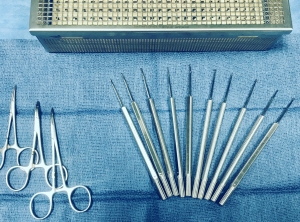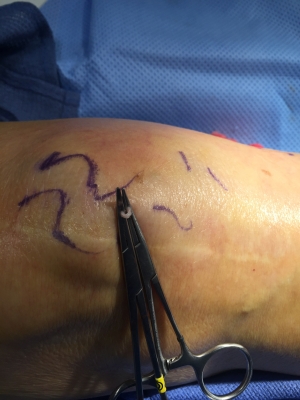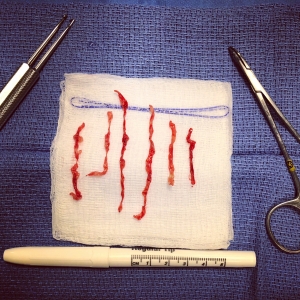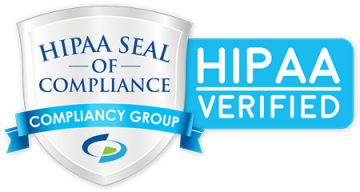What is Phlebectomy of Varicose Veins?
Phlebectomy is a minimally invasive procedure used to remove varicose veins on the surface of the leg. This is usually done in a physician’s office using local anesthesia.
How should I prepare?
You will receive specific instructions on how to prepare, including any changes that need to be made to your regular medication schedule.
You should wear comfortable, loose-fitting clothing to your exam. You may be given a gown to wear during the procedure.
What does the equipment look like?
A small scalpel or needle is used to make very small incisions. A phlebectomy hook is used to remove the veins. The hook is similar to a tiny crochet hook with a blunt tip and a straight shaft.
How does the procedure work?
Phlebectomy involves making tiny punctures or incisions in the skin near the varicose vein. Veins are very collapsible and even large veins can be removed through the tiny incisions used in this technique.
How is the procedure performed?
This procedure is often done on an outpatient basis. However, some patients may require admission following the procedure. Please consult with your physician as to whether or not you will be admitted.
Your physician will numb the area with a local anesthetic.
Because the area is numbed, you are typically awake during the procedure.
A very small skin incision is made at the site.
After cleansing and anesthetizing the skin, a series of incisions no larger than a pencil eraser are made in the skin next to the enlarged vein. A phlebectomy hook is inserted under the surface of the skin to remove the varicose vein through the tiny incision. This procedure is usually completed between 30 minutes and one hour.
What will I experience during and after the procedure?
Patients rarely report any pain during this procedure because the area being worked on is under a local anesthetic.
The incisions made during the procedure are so small that no stitches are required.
When the procedure is complete, your leg will be wrapped in a comfortable but snug compression wrap.
You will need to wear graduated compression stockings for approximately two to three weeks following the procedure. As long as the stockings are worn, almost all activities can be done beginning the day after the surgery.
You should be able to resume daily activities within 24 hours. Strenuous activities will be limited for approximately two weeks.
Who interprets the results and how do I get them?
The interventional radiologist can advise you as to whether the procedure was a technical success when it is completed.
Your interventional radiologist may recommend a follow-up visit after your procedure or treatment is complete.
The visit may include a physical check-up, imaging procedure(s) and blood or other lab tests. During your follow-up visit, you may discuss with your doctor any changes or side effects you have experienced since your procedure or treatment.
What are the benefits vs. risks?
Benefits
No surgical incision is needed—only a small nick in the skin that does not have to be stitched.
Risks
Any procedure where the skin is penetrated carries a risk of infection. The chance of infection requiring antibiotic treatment appears to be less than one in 1,000.
Skin pigmentation at the site of the treated varicose vein may occur but is usually temporary.
What are the limitations of Phlebectomy of Varicose Veins?
Long-term success in greater than 90 percent of patients has been observed. The long-term results of phlebectomy are excellent when the procedure is performed in patients who are good candidates.
Often, phlebectomy is used with a more comprehensive treatment plan, including additional procedures such as endovenous catheter ablation that use radiofrequency or laser energy.
Patients should discuss their individualized treatment plan with their interventional radiologist.
The above information is not all inclusive of the risks, alternatives and benefits. It is not meant to be a substitute for informed discussion between you and your doctor, but can act as a starting point for such a discussion. There are complications possible with any medical procedure. Overall, minimally invasive procedures have a lower complication rate than open surgeries.







